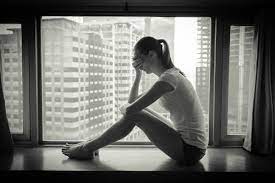Mood disorders are a set of syndromes also called “affective disorders” in which the patient experiences a severe alteration of mood. In order to talk about mood disorders it is necessary that the alteration be lasting over time, that it interferes with the normal social and working functions of the person. The treatment of mood disorders, such as depression or bipolar disorder, generally involves pharmacological and non-pharmacological treatments. In some cases, hospitalization is required.
Mood disorders
Mood disorders are a set of rather different pathologies, each of which is characterized by some specific symptoms. However, what characterizes them all is the pathological alteration of the mood that creates marked psychological distress as well as problems in social and relational functioning. The alterations in mood are mainly:
- depression characterized by sadness, decreased vitality and negative ideas.
- mania characterized by excessive euphoria, logorrhea, increased speed of thought up to leading to psychotic symptoms such as delusions.
- mixed mood characterized by the presence of depressive symptoms and manic
- symptoms concomitantly also known as “dyspho
Mood disorders and epidemiology
The frequency with which mood disorders occur in the general population is very high compared to other pathologies or psychiatric disorders. Major depressive disorder is the best known and most widespread mood disorder.
According to many studies, it is the disorder with the highest growth trend, especially in Western culture. According to NCS-R data, in the Western world the probability of developing a depressive disorder in the span of life is around 17%.
Mood disorders and gender differences
With regard to depressive disorders, a clear prevalence of the disorder is observed in women (about double that of men).
Although some studies observe how this trend disappears with advancing age. In geriatric age, therefore for people over the age of 65, senile depression seems to affect men and women alike.
As for bipolar disorder, there is no difference between male and female sex and the probability of developing bipolarism over a lifetime is around 1%.
Mood disorders and DSM 5
DSM 5 is the statistical and diagnostic manual of mental disorders and is considered the reference manual for psychiatry worldwide. In DSM 5, mood disorders were divided into two distinct categories:
- the Depressive Disorders
- the Bipolar Disorders
Summary
Although both are mood disorders, the DSM-5 prefers to divide them into two distinct categories due to the peculiar differences of these two particular categories of disorders. In fact, there are two different chapters, one intended for bipolar and related disorders and the other for depressive disorders.
